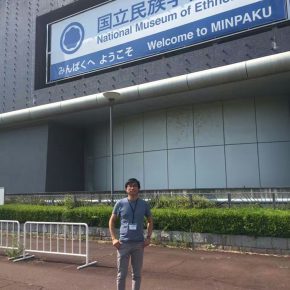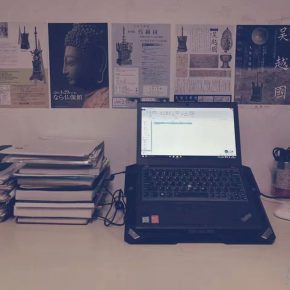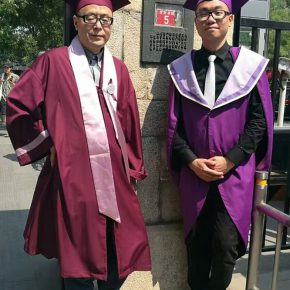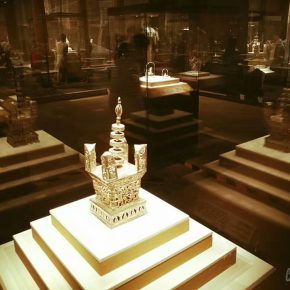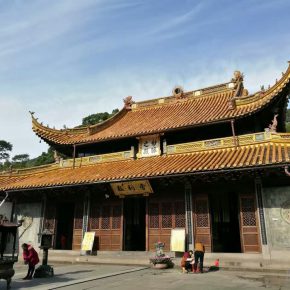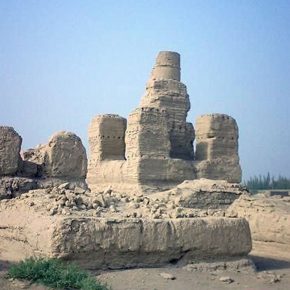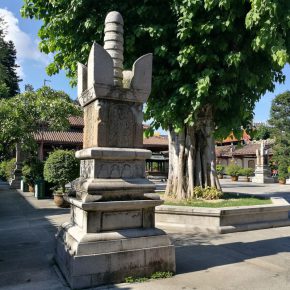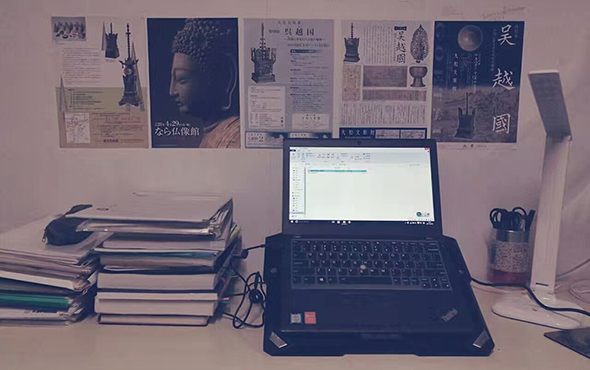
For me, research is a lifetime thing, although it is very long, I am satisfied rather than being pained. It is already part of my life.
– Wu Tianyue
Interviewee: Wu Tianyue (hereinafter referred to as Wu)
Interviewer: Zhong Yuwei (hereinafter referred to as CAFA ART INFO)
Interview Time: July 25, 2017
Translated by Chen Peihua and edited by Sue/CAFA ART INFO
CAFA ART INFO: First of all, congratulations on your scholarship! Please talk about your experience of winning.Wu: It was unexpected for me to win this prize, and I am particularly grateful to my mentor Prof. Li Jun. It started with the selection of a topic to the completion of the paper, with thanks to the patient and meticulous guidance of my mentor. Prof. Li has always appreciated my interdisciplinary background and encouraged the cross-cultural and interdisciplinary research. The exchanges between my classmates gave me a lot of inspiration, and I also thank many teachers and friends that facilitated the study of my doctoral thesis.
CAFA ART INFO: First Step Award is an important prize from the academy, it must be exciting for a student of the School of Humanities to win such a prize, what do you think makes your work stand out from so many entries?Wu: I am encouraged by the award. But a person’s research standard is determined by the academic article and the path to the future is still very long.
My experience is special, for I have changed my specialties and universities three times from the undergraduate study to the doctoral study. I learned Philosophy (Minor in Anthropology) in the Sun Yat-sen University for a bachelor’s degree, learned Religious Anthropology in Nanjing University for a master’s degree, majored in the research of cultural heritage in CAFA for a doctoral degree, and once worked in the Institute of Ethnic and Folklore of the Nanjing Museum and I had an academic visit to the National Museum of Ethnology in Japan. I am very conscious of the choice of my specialties, and I have been concerned about the field of religion, observing the religious phenomenon from different perspectives. My advantage lies in interdisciplinary thinking, combining multidisciplinary approaches and theories.
CAFA ART INFO: There are about 400 pages in your paper, which is very difficult for the ordinary audience and reader. Could you briefly introduce your research with a passage?Wu: My paper is a comprehensive study of Ashoka pagodas built by Qian Chu, the last king of the State of Wuyue in the Five Dynasties (907-978), and the ones build by the folklore monks. It tries to interpret the materials, forms, images of Ashoka Pagodas of the State of Wuyue and the hidden belief, to re-examine the activities of building a pagoda and printing Buddhist texts in the State of Wuyue, from the perspective of East Asian Buddhist cultural exchange during the medieval period, rather than the dynastic history of art for the State of Wuyue.
In the past, the topic was mainly concerned with the scholars of architectural history, focusing on the forms rather than the laws of the evolution of the image, so their research imperceptibly ignores some issues. Such as material selection and overall design meaning of Ashoka Pagoda, the relationship between making a pagoda and possession of “Bao Qie Yin Tuo Luo Ni Jing”, the derivative changes of forms and images after it spread to Japan and South Korea, etc., which are all worth a deep discussion. On the basis of previous studies, I have new thinking and make a breakthrough on these issues. I believe that Qian Chu, the king of the State of Wuyue imitated ancient Indian Ashoka to build the “eighty-four thousand pagodas” and the pagodas built by the folklore monks which were a copy of the prestigious Ashoka Pagoda in the Mao County. Its original form was from the “Shakya Four Pagodas Change” of the Western Regions. Many forms and image elements of Ashoka Pagoda of the State of Wuyue reflects the generalized Buddhist art style of the Region of Gandhara, but the mountain flowers and banana leaves were altered by later generations. The Ashoka Pagoda of the State of Wuyue should be placed in the sequence of a single-layer square pagoda in the north and south single-layer square tower for inspection. The State of Wuyue’s pagoda construction might be affected by the monks Yongming Yanshou and Tiantai Deshao.
Because only one piece of “Bao Qie Yin Jing”, which was printed three times by Qian Chu, is placed in the Ashoka Pagoda, Qian Chu built the Ashoka Pagoda perhaps for the “Dharmakaya Relic” symbolizing the Buddha who is included in the pagoda.
The pagoda made by Qian Chu spread to Japan and South Korea, which was important evidence for the East Asian Buddhist cultural exchange of the 10th century. After that, in Japan and South Korea, it was combined with their own popular beliefs, to produce the “localized” forms of Ashoka pagoda. The interpretation and evolution of the “image of Ashoka Pagoda” in the Song Dynasty manifested the complexity of forms and connotations, which reflected the cognition and conception of the image of “Ashoka Pagoda” in the Song Dynasty, the royal family of the Southern Song Dynasty supported Ashoka Pagoda in Mao County.
It is certain that there are many problems waiting for further studies, and I still continue to read material and study after the graduation paper was finished, and I hoped to find some clues to the Buddhist activities in other countries of the Five Dynasties and Ten Kingdoms period, to make a comparison, such as the building of pagodas in the South Han Dynasty.
CAFA ART INFO: When did you start this research? What difficulties have you encountered during the creative process? How did you solve them?Wu: I started to gather literature and went on a field trip when I was a doctoral candidate in the second semester of the first year of my doctoral study. The whole study was fairly smooth. The key is to have a reasonable classification towards the collected material and then processed it step by step. One year, I received the Wang Shikuo overseas study scholarship for postgraduate students, then I went to Japan to study the pagodas built by Qian Shu, collected by the museum in Japan, which has never been done by Chinese scholars before so it was a supplement to the study of this field.
CAFA ART INFO: Is the course of research a long, painful process for you? When you encounter frustrations and problems, what makes you stick to it?Wu: For me, research is a lifetime thing, which is long but not painful, and I am satisfied. It is already part of my life. I have never thought of the separation of research and rest, I think and study anytime and anywhere, and relax anytime and anywhere.
CAFA ART INFO: It is necessary for a scholar to bear these things alone, to sit on a cold stool. Do you have any plan for your future artistic career after graduation?Wu: Learning is very interesting. I have never felt lonely, and art history does not cool one’s heel at all. Since I studied in high school, I have had many friends engaged in humanities and social science, and we often discuss together, we are not lonely for we have our own topics.
As for my plan, I will be a teacher in the College of Fine Arts of Hangzhou Normal University. I will continue to improve my current study of Ashoka Pagoda of the State of Wuyue, and expand my learning. I will use the scholarship to go to India and Pakistan to systematically study the remains of pagodas and grottoes, returning to the hometown of Buddhism.


